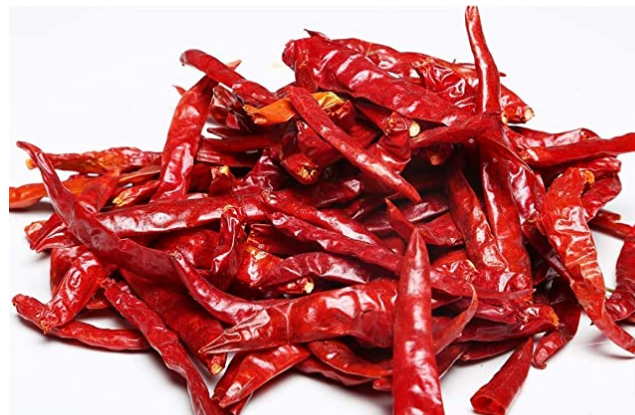Spices in Indian Cuisine- Chilli

Spices remind me of ancient civilisations. Of the Indians and the Egyptians, of the Chinese and the Sumerians and of the medieval Europeans. There is some enigma and mysticism attached to spices. The Egyptians mummified their dead with cumin, the Chinese burnt cloves to commune with the spirit world, the Europeans of the dark ages believed nutmeg was the only cure for the Plague and the spice all Indians bathed in spices both literally and figuratively.
My encounter with spices took place at the unlikeliest of places. It was during the funeral of one of our neighbours. The widow of the poor deceased soul informed my Ma that lunch was being served in the next room and added apologetically, “The food is without spices; we are in mourning!” That was when I had my epiphany. Indian food without spices is heresy of the highest order, only to be tolerated if you are in mourning.
The anomaly of the Spice Trail
But what is known today as “Indian spices” was unheard of even a millennium ago. Chillies, which the world inextricably identifies with Indian food came to our shores only about 450 years back. Spices like coriander and fenugreek came from Egypt and Greece respectively and so did mustard seeds, nigella seeds, nutmeg and mace. India has embraced them all and has developed supremely sophisticated ways to use them in her regional cuisines. Such was the demand for spices that India is now the largest producer and consumer of spices in the world. Be it savoury, sweet, sour or bitter, nothing, absolutely nothing is complete without spices. Let alone food; we use spices as painkillers, as tranquilisers, as anti-depressants, as immuno-boosters, for dental health, for lightening skin tone, as aphrodisiacs and even as suppressants for libido. I can go on and on.

Nutmeg
Indian food is so steeped with spices that often it is the spice that defines a dish rather than the main ingredient. Considering how all-pervasive spices are, it is very surprising that we know so little about them. Ask a common grocer anywhere in the country where his chillies are coming from and he will answer with an indifferent shrug. Ask the spice seller of a spice shop where his carmine chillies are grown, he will reply confidently, “Kashmir”. Actually, it does not. What is known as “Kashmiri chillies” in the market are grown from seeds that at some point originated in Kashmir but have been grown for decades in Karnataka and Andhra Pradesh.
The most intriguing aspect of spices is its provenance vis-à-vis its use. Take the case of West Bengal. It is one of the largest consumers of poppy seeds in the country which grows nowhere near its borders. Or say saffron which grows only in Kashmir. Its use in Kashmiri cuisine is insignificant in comparison to the largely vegetarian states of Gujarat and Rajasthan. So, how did spices travel? Frankly, I don’t know. It is this mystery and my fascination for understanding spices that forced me to dig deep and explore.
In my quest, I have pestered every chef that I could lay my hands on, travelled and met owners of spice stores and spice merchants, visited the spice auction markets of South India, sneezed and coughed and made my way with watering eyes through Khari Baoli in Delhi and interviewed home chefs and housewives. Yet, the insurmountable world of spice is so vast that the major part of it is still left unexplored. I believe it’s not a job that can be completed in one’s lifetime. So, let’s discuss today only about chillies. The reason being, chillies are the most prolific in their uses and are universally common in any Indian regional cuisine.

Chilli
Ask any ten people from any part of the world what they correlate with Indian food and nine of them will reply “Chillies”. They are not off the mark, though there are many wickedly hot dishes from many other parts of the world. This hottest and one of the most flavourful of all spices has been around since 7500 BCE. The earliest mention of chillies being used in any form of cuisine is in Mexico around 5000 BCE. Astonishing that chilli reached India only about 450 years ago. That also when the Portuguese brought it to Goa. What an irony that the Europeans introduced chillies to us presumably from Brazil! According to Lizzie Collingham, Pernambuco peppers started being grown in Goa. Their use grew exponentially southwards supplanting the extremely expensive black pepper and pipli (long pepper). The use of chillies moved northwards to Delhi and Agra only with the Marathas towards the end of the Mughal period.
Read More:- https://foodcruiseblog.com/spices-remind-me-of-ancient-civilisations/
